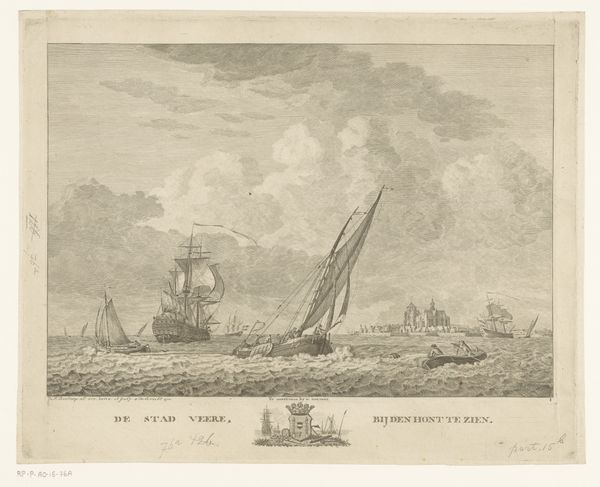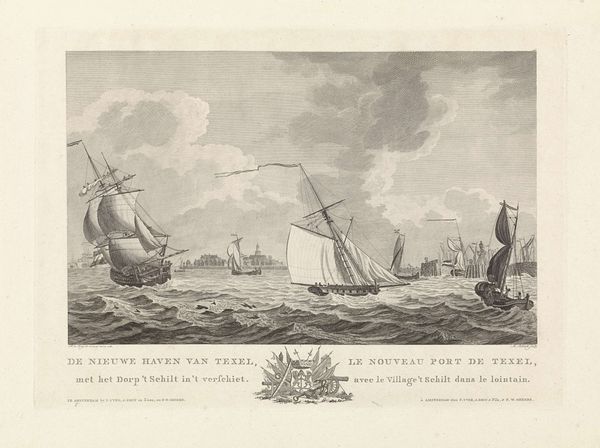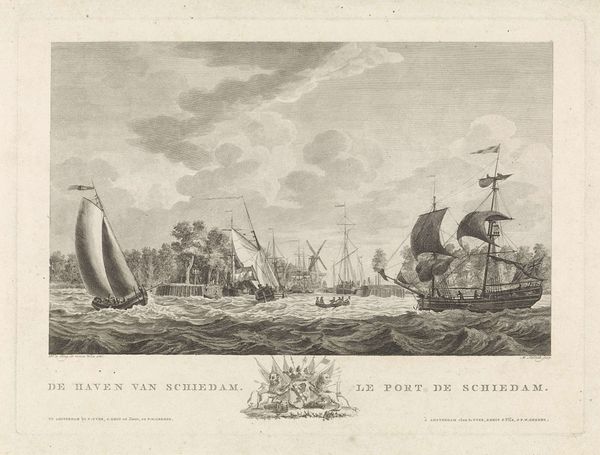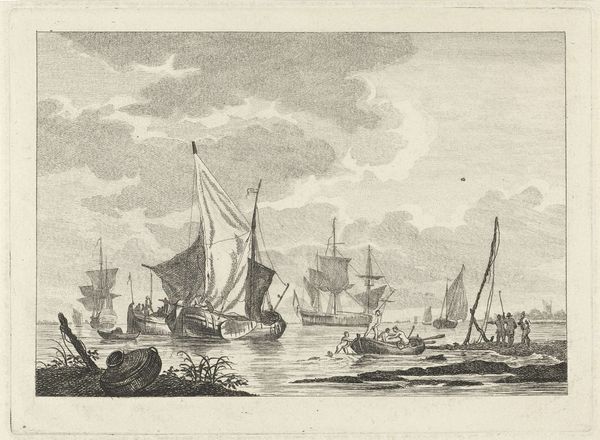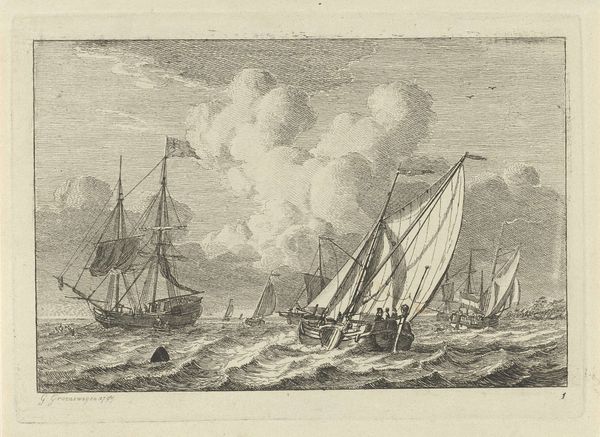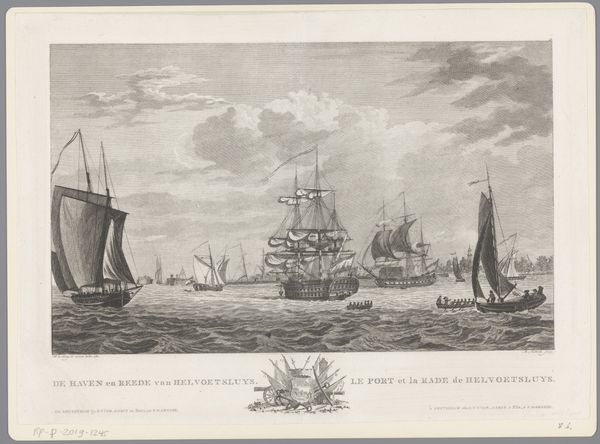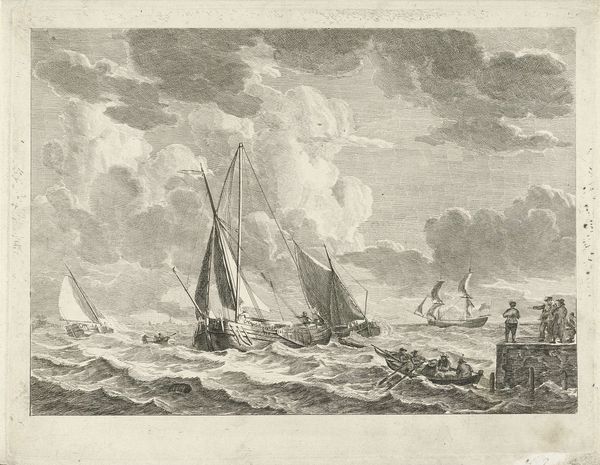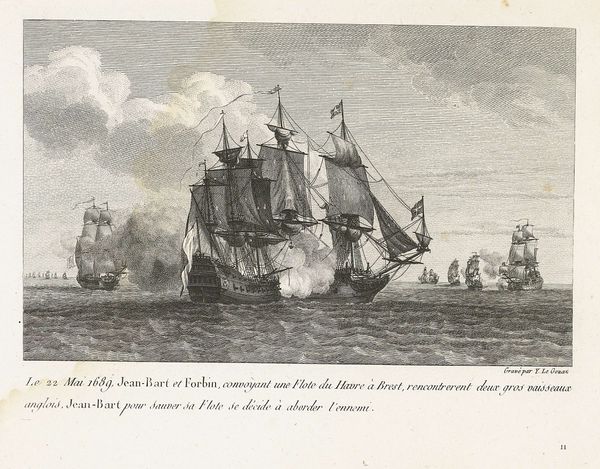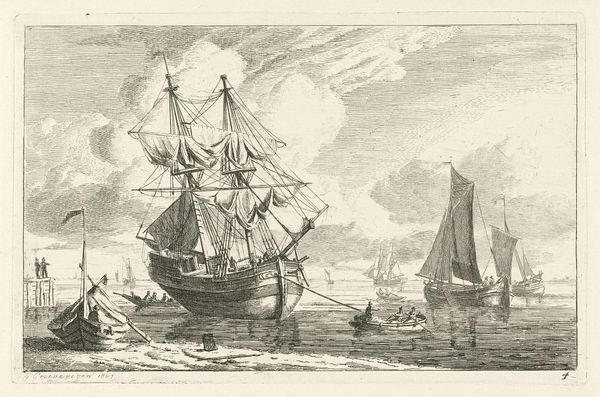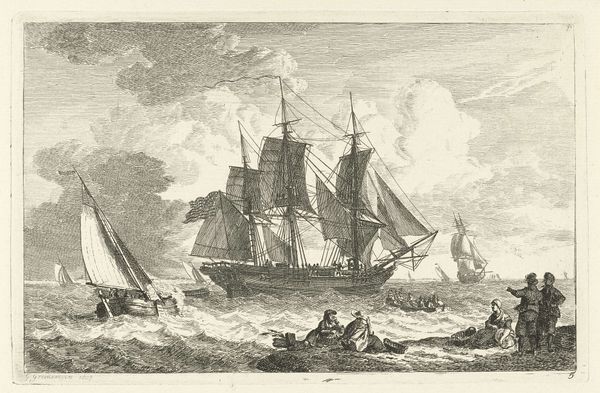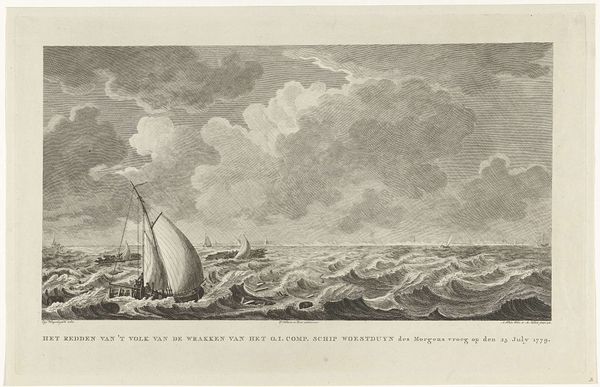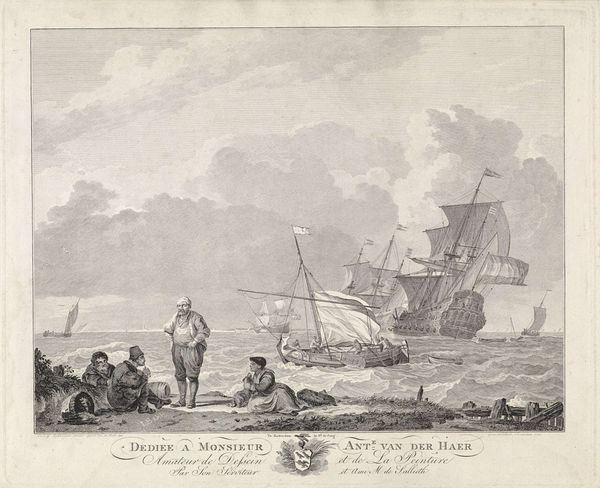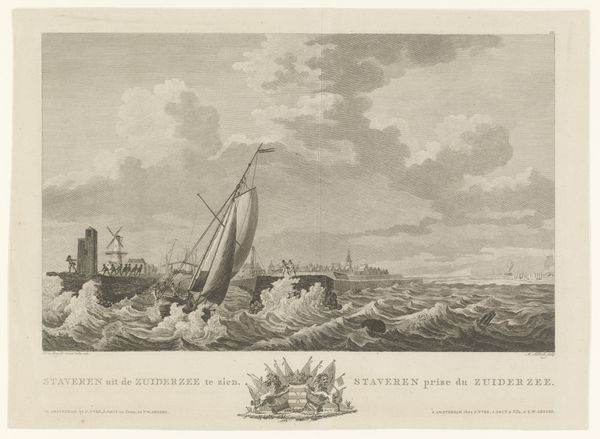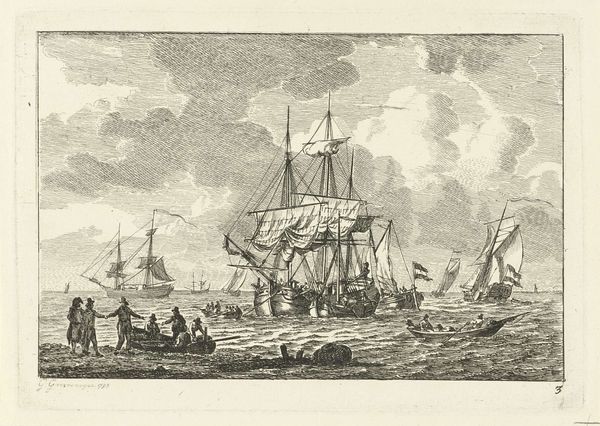
Dimensions: height 329 mm, width 406 mm
Copyright: Rijks Museum: Open Domain
Editor: So, this is “View over the IJ towards Pampus” by Mathias de Sallieth, made between 1785 and 1791. It's an engraving on paper, and it’s making me think about leisure and trade. What stands out to you? Curator: What catches my eye is the symbolism imbued in such a seemingly straightforward scene. The ships, of course, speak of trade, of the Dutch Republic's maritime power, but also its vulnerability. Notice how some vessels are grand, bearing the Dutch flag proudly, while others are small, almost floundering. What could this duality signify about Dutch society at the time? Editor: I hadn't considered it that way, but you’re right. There’s a definite contrast in scale and condition between those ships. Curator: And look at the figures on the shore – a couple strolling leisurely, some working. This interplay is itself a potent symbol. Doesn’t it evoke the social strata, the comforts and struggles intertwined in a seafaring nation? Editor: I guess I was just seeing it as a pretty picture of ships on water, but you’re showing me a whole other level. The contrast highlights a world where wealth relies on risky maritime activity. Curator: Exactly! Consider the perspective, the viewpoint. The artist isn't glorifying naval victories or opulent ports. They’re showing daily life against a background of grand endeavor. They allow you to reflect on your own positioning and participation in those same circumstances. Is that distance intentional? Editor: That’s fascinating to think about. I am going to spend more time deciphering the subtle language within what initially seems like just a beautiful landscape. Curator: Me too. Every viewing provides something new to consider.
Comments
No comments
Be the first to comment and join the conversation on the ultimate creative platform.
